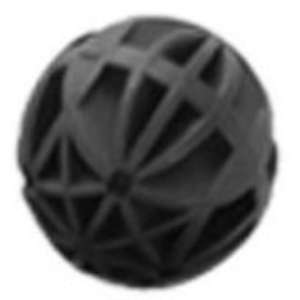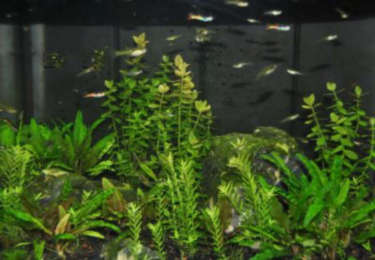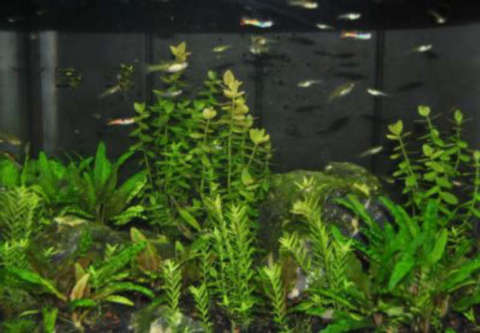Editors Notes:
We enjoy this aquarium so much we felt we just had to share the details of it with our visitors.
While this aquarium setup is successful for us, it is the only aquarium we have been able to use this process on successfully and it may be difficult to get the same results as we have depending on your situation.
Many of our well planted aquariums come close with only small water changes needed however they don’t do as well as this one does.
We would also like to note that in general we feel like partial water changes are one of the most important aspects of keeping a healthy environment for aquarium fish.
We would also note that although we have been fortunate to have very healthy fish in this tank and have never had to deal with any type of illness, in theory some may argue that this type of setup may not be the perfect environment for any type of fish including Endlers.
Although we call this aquaium our “low tech planted tank”, the reality is that all of our aquariums are what are usually refered to as “low tech” as we don’t use expensive lighting systems or CO2 in any of our aquariums at this time.
Small But Efficient Aquarium
Our favorite aquarium is not one of our 40-gallon breeder tanks. Our favorite tank is one of our most successful aquariums using a low tech planted tank that requires no traditional partial water changes.
The tank we are referring to is a small “AquaPod” 12-Gallon Aquarium.
First of all, don’t try going out and buying one of these tanks. Unfortunately, this tank has been recalled due to a potential shock hazard when only one plug is plugged in (we use both plugs and have had no issues).
While the “AquaPod” 12-Gallon Aquarium is no longer available there are several aquariums that are quite similar.
This small tank was designed for a small saltwater setup. The hood of this tank uses an actinic light bulb as well as a white fluorescent bulb.
The back of the tank contains a hidden surface skimming filtration system.
I wish we had hundreds of tanks with this design as they are great for use in the controlled breeding of our Endlers.
No Partial Water Changes
What makes this tank different than any of our other aquariums is the fact that we never to 10%-30% water changes. In fact, we rarely do any water changes at all in this aquarium.
We also rarely do gravel vacuuming to keep the aquarium floor free from excessive debris as little to no debris accumulates on the surface of the substrate.
It is necessary to do a very large water change (60%-80%) if a major change is made to the tank causing debris from the substrate to be mixed into the water.
Because we rarely ever change the decor of the tank we rarely have to do a large water change. In fact, we usually do it less than once a year.
How The Tank Is Set Up

These little Bio Balls have a small sponge in the center of the ball and are quite affordable on eBay.
The back portion of the tank with the surface skimming filtration system is filled with these little bio balls. We use as many as we can get into the empty spaces.
This causes the Bio Balls to be submerged in one chamber and are out of the water with water running across them in the other chamber.
We also use a course sponge to filter out any large particles in the first chamber of the filtration system. This sponge is also a great place for beneficial bacteria to make their home.
The substrate used in this tank is about 2″ deep CaribSea Flora Max Planted Aquarium Substrate (black) with some other leftover substrates added.
The Key
So what’s the key to making the whole thing work? It’s the plants, substrate, filter media, and bacteria, as well as keeping the number of Endlers low enough that they don’t overwhelm the system.
The idea is to have enough plants that they completely control the ammonia and nitrates that are produced from the fish waste, excess food, and decaying plant matter.
This doesn’t completely eliminate the need for water changes however as there can still be a build up of minerals and toxic metals. This is one of the reasons that we do a very large water change when it needs to be done.
Simplified Theory Behind a Low Tech Planted Tank
The principal waste product produced by fish is ammonia. Ammonia is toxic to fish and can lead to an inability to fight illness, small size, gill damage, ammonia burn or death. In fact we believe the number one cause for illness in Endlers is poor water quality.
Ammonia is also produced by decaying plant matter and uneaten fish food. If there are any other animals in your tanks such as snails they will also contribute to ammonia in the tank.
In a properly cycled aquarium, Nitrosomonas Bacteria convert ammonia into Nitrite. Nitrite is also toxic to fish.
Nitrite is converted to Nitrate by Nitrobacter Bacteria. Nitrates are considered relatively harmless except when in high concentrations.
Nitrates are used by plants to help produce chlorophyll which is essential in the photosynthesis process.
The theory behind a low tech planted tank is that the majority of the Nitrates produced in a properly cycled aquarium are absorbed by the plants preventing the buildup of Nitrates.
Because the process of eliminating ammonia and nitrite is dependent on living bacteria it is important to maintain an environment that helps keep the bacteria healthy and prevent the bacteria from being killed.
Overfeeding or overstocking a tank can create a situation where the bacteria cannot overcome the amount of ammonia being produced. It is best to keep the number of fish low and feed your Endlers small amounts several times a day. Ideally all the food that enters the tank should be eaten right away.
Never feed your fish more than they can completely eat in a couple of minutes.
In the case of raising Endlers t is a good idea to give them foods that do not sink to quickly giving your Endlers the opportunity to eat the food before it reaches the tank bottom.
Our Favorite Plant
We densely populate the tank with Cryptocoryne wendtii. Cryptocoryne wendtii is a slow-growing plant that does quite well in low light conditions. It requires no additional CO2 and can be divided from time to time to supply more plants for your other tanks.
Cryptocoryne is known to “melt” when disturbed. We have not found this to be the case however we do loose some of the larger outside leaves when we thin the plants out.
Crypt Melt is more common when a plant is purchased that was grown out of water and then placed in an aquaium under water. The melt is due to the plant attempting to adapt to the changing conditions.
Although the Cryptocoryne wendtii grows slowly it produces more plants that grow from the root system as well as small plants that seem to come from seed as they show up in other parts of the tank from time to time.
Cryptocoryne grows slowly so it needs little to no trimming or maintenance except if you wish to thin them out to get more plants. We started with one plant that we purchased from PetCo many years ago and now we have hundreds of beautiful plants.
One disadvantage of the slow growth is that they can become covered in algae if your water conditions are not quite right. Trimming off the leaves that are covered in algae is the easiest way to fix the problem along with resolving the cause of the algae growth.
Having too many Endlers in your tank is one of the most common reasons for excessive algae growth. Although algae is usually unsightly we don’t necessarily feel that algae is bad and allow it to accumulate on the back and sides of our tank if it will grow. Our Endlers love it and it gives our fish something to eat between meals and when we are away.
There are several other plants that could work well for this process however we really love the Cryptocoryne as it has been our most successful plant along with our Java Moss.
We Didn’t Invent the Process
Although we modified the technique a little bit to suit our needs we didn’t invent it. In fact, there is quite a bit of information available on the web under the search term “Low tech aquarium”.
One of the most notable articles written for beginners can be found here:
Lighting Our Low Tech Planted Tank
Plants need CO2 and nutrients in order to grow and be healthy. Fortunately, the addition of fish food and fish waste helps to provide much of the food the plants need. Of course, some plants have different needs than others but the plants we grow really haven’t needed much in the way of fertilizer.
The addition of light helps the plants use the CO2 in the photosynthesis process. The more light the better right? Not necessarily.
Many hobbyists believe the majority of the CO2 that gets built up in the evening when the lights are off gets used up in the first few hours after the lights are turned back on.
Some hobbyist recommends turning on the lights on in the morning for four hours and then turn them off for four hours and then turn them back on for another four hours.
Turning the lights off during the middle of the day may help to build CO2 levels back up so that the plants can take advantage of the additional CO2 in the afternoon.
We have tried this method and haven’t felt like it made a real difference.
Because our main focus is our fish and not our plants we leave our lights on for 12 hours a day in the summer and about 11 hours a day in the winter.
How We Use This Tank

We use this tank whenever we want to develop a new strain or improve an existing one. We keep the number of Endlers fairly low and remove any large females.
We remove the fry as they grow larger to prevent the tank from being overwhelmed by too many Endlers.
Currently, we are using this tank to “fine tune” our Snakeskin Orchid Endler strain.
Disadvantages to a Low Tech Planted Tank
- If you like to make lots of changes to your tank every so often or if you enjoy trimming and maintaining the plants in your aquarium this low tech planted tank system is probably not ideal for you.
- Low tech planted tanks take a long time to establish and the number of fish added to these tanks must be smaller than the number used in aquariums using traditional filtration systems.
- The number of fish must start out with only one or two fish and grow very slowly to give the system the opportunity to adapt.
- One other disadvantage we have found is when we try to net specific fish. The lush plant growth gives fish (and fry) lots of hiding places making it difficult to catch a specific fish.
A Final Note
This has been one of our most successful and enjoyable aquariums. We have had little to no problems with this tank for several years. In fact, the tank seems to produce some of the most beautiful and healthiest fish out of all our tanks.
We have had some small algae blooms as you can see in the photograph above. These seem to occur when we stir up the substrate too much or and is especially a problem when we do a major water change.
If you do happen to stir up the substrate and have sediment rest on top of the plant leaves it is important to vacuum it off as this will lead to algae growing on the leaves. Once the tank is well established no sediment or accumulation of waste should be seen.
Once a nutrient and light balance has been achieved there is little algae produced in the aquarium. Some spot algae is produced on the sides and back of the aquarium which we leave their to feed the Endlers.
We have attempted to use the same process in several of our other tanks using sponge filters, however, the bio-load seems to overwhelm the filter system and we have to do weekly partial water changes in order to keep the fish healthy.


The above article covers much of what I wrote in ‘Ecology of the Planted Aquarium,’ which celebrates plants as water purifiers. A few additional thoughts… Plants have a HUGE preference for ammonia over nitrates, so plants can be the first line of defense against ammonia toxicity.
My website’s Aquarium Plant page has a free article (‘Nitrogen Uptake in Aquatic Plants’) with more information PLUS the scientific documentation. Hobbyists that emphasize biological filtration over plants can end up with acidic water and nitrate accumulation. My book also addresses the problem of catching guppies in a heavily planted tank (Color Plate 1). Pots and trays of plants (planted in soil) that can be pulled out at will are another option. Also, I have been able to keep a large number of fish in a heavily planted tank. Under the right circumstances, more fish will simply fuel more plant growth–and vice versa.
Hi, This tank reminds me of a 10 gal tank I had in High School. It had only Cryptocoryne probably Wendtii in cut down tofu containers, some peat moss, and pea gravel to cover. They covered the bottom. There was I think a 15W warm white fluorescent light that was on a timer, and a hang on overflow type filter with a cartridge that had some carbon in it and would be rinsed out periodically. The water turned a light amber color and the Cryptocoryne grew wall to wall to the top of the tank. And the tank’s occupant a lone gourami did very well. There was no algae to scrape, no partial water changes for about at least a year when I broke down the aquarium to divided the plants and sold a whole bunch to the aquarium shop. Hawaii outside, no direct sunlight on lanai, no heater.